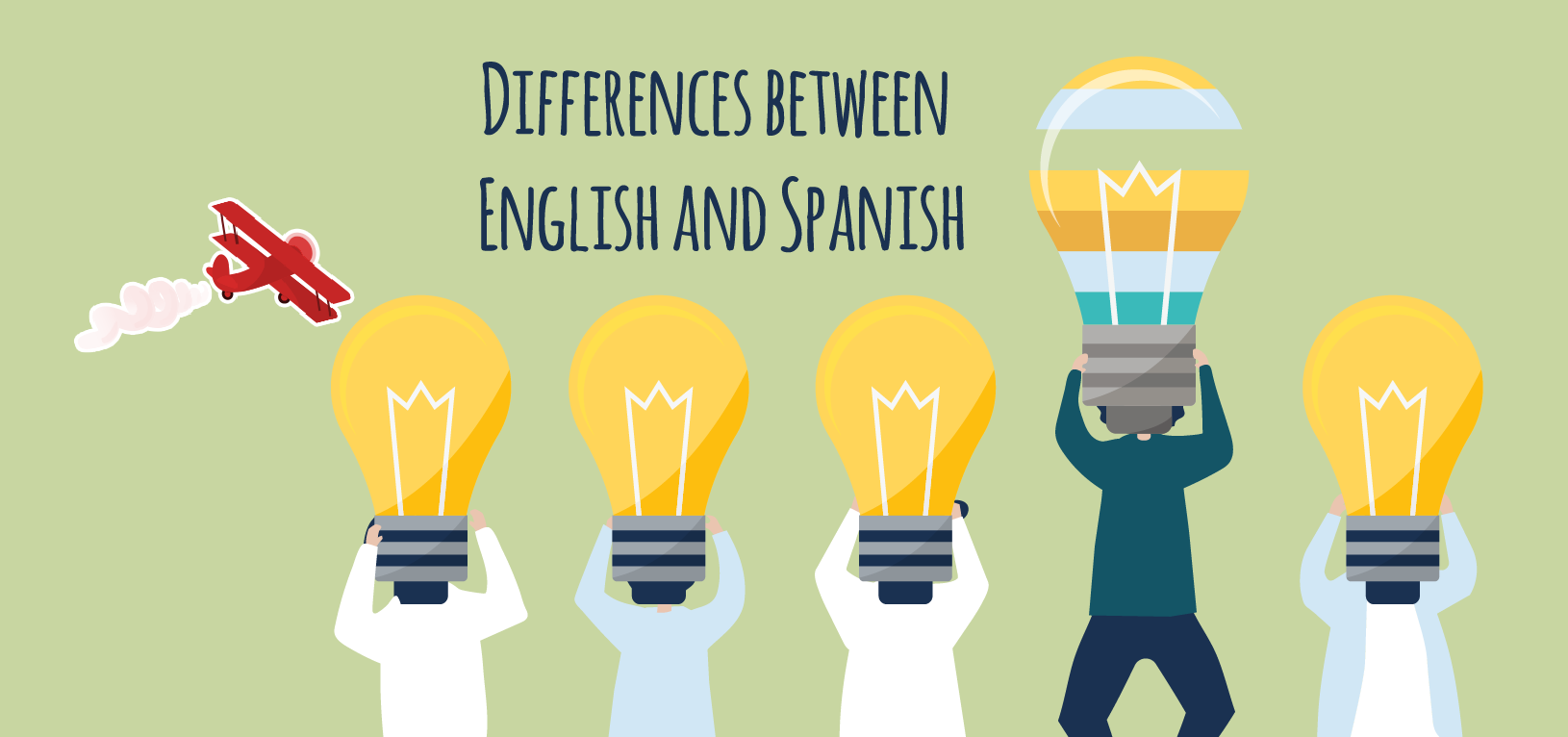Differences between English and Spanish

Differences between English and Spanish
INDEX OF CONTENTS
- First
- Second
- Third
- Fourth
- Fifth
- Sixth
- Seventh
- Eighth
- Nineth
In this article we are going to address the differences that exist between English and Spanish, basic grammatical differences in order to avoid, in a certain way, that students make the classic mistakes that are incurred when using English. Here are the most important summarized a series of differences between both languages:
First
In English, as a general rule, the adjective is placed before the noun it describes, while in Spanish the opposite happens and the noun goes before the adjective.
- I have a big dog
(Tengo un perro grande)
- My white cat
(Mi gato blanco)
- I drink cold water
(Tomo agua fría)
While subject pronouns in English are used obligatorily, this is not the case in Spanish.
- I am tall
(Soy alto/a)
- He is very scrupulous
(Es muy escrupuloso)
Second
While we see that object pronouns in English always go after the verb, in Spanish the opposite happens and they go before the verb.
- I told him
(Le dije)
- dodged me
(Me esquivó)
Third
Differences in the conjugation of verbs. While in Spanish, in which all verbal persons are conjugated, the English verb only has one conjugation. From hence to form the infinitive the ‘to’ particle is used preceding the verb:
- To play
(jugar)
- To sing
(cantar)
In English the present indicative is formed with the infinitive without to. All people have the same form, except the third person singular (in which an ‘-s’ is added to the infinitive).
- I play
(yo juego)
- You play
(tú juegas)
- He / She / It plays
(él, ella, ello juega)
- We play
(nosotros jugamos)
- You play
(vosotros jugáis)
- They play
(ellos juegan)
In the past , the ‘-s’ is not used in the third person singular
- I played
(yo jugué)
- you played
(tú jugaste)
- he/she/it played
(él/ella/ello jugó)
- we played
(nosotros jugamos)
- you played
(vosotros jugasteis)
- they played
(ellos jugaron)
Fourth
In English the adjective and the specific article (el, la, los, las) are invariable from the point of view of the grammatical gender (masculine or feminine) and the number (singular or plural).
- The tall boy
(el chico alto)
- The tall girl
(la chica alta)
- The tall boys
(los chicos altos)
- The tall girls
(las chicas altas)
Indeed, as we can see from the examples, unlike English, in Spanish the gender and number are changed to the article and the adjective depending on the noun they accompany.)
- The = el, la, los, las
- tall = alto, alta, altos, altas
Fifth
One of the characteristics of English is its variable pronunciation. Indeed, a big difference that you will find is in the pronunciation of English, since the same letters and combinations of letters in words can be pronounced differently from word to word. Oddly enough, it is a reality of the English language. While in Spanish when you see a group of letters in a word you can be 99% sure how to pronounce the word – with English there are cases of quite a difference.
As we already know in English there are sounds that we do not have in Spanish and on the contrary , for example in English there are 12 vowel sounds while in Spanish only 5 and, as regards the consonants, there are certain phonemes that do not sound the same despite be written identically, for example b, p, t, h, g, v, z, etc. Also in English like many other languages there is no letter ñ.
Sixth
While in Spanish we have “tú” and “usted” in English it is simplified to use “you” in both cases.
- You are from England
(Tú eres de Inglaterra o Usted es de Inglaterra)
- You should not do that
(Usted no debe hacer eso) / (Tu no debes hacer eso)
Seventh
Another difference is that the names of nationalities, languages, days of the week, months of the year in English are capitalized , while not in Spanish. The English also lower-case the names of the stations when they are used in a general way.
- American
(americano)
- English
(inglés)
- Friday
(viernes)
- September
(septiembre)
I (yo), the personal pronoun I in English is always capitalized.
Eighth
There are also differences in punctuation marks . Question marks and exclamation marks in English are only placed at the end of the sentence, while in Spanish they are placed both at the beginning and at the end of the sentence
Nineth
The order of the words in the sentence is also significant . The order of words in a sentence in English may vary from the order in Spanish. In English the order of the words is more important – changing the order is not allowed.
For a positive declarative sentence the following scheme is very useful:
- Subject + (adverb of frequency if there is one) + verb + c. indirect + c. direct + cc mode + cc place + cc time
I solved the problem quickly at home yesterday
S—V——C.D. ——–C.C.M. — C.C.P. —C.C.T.



